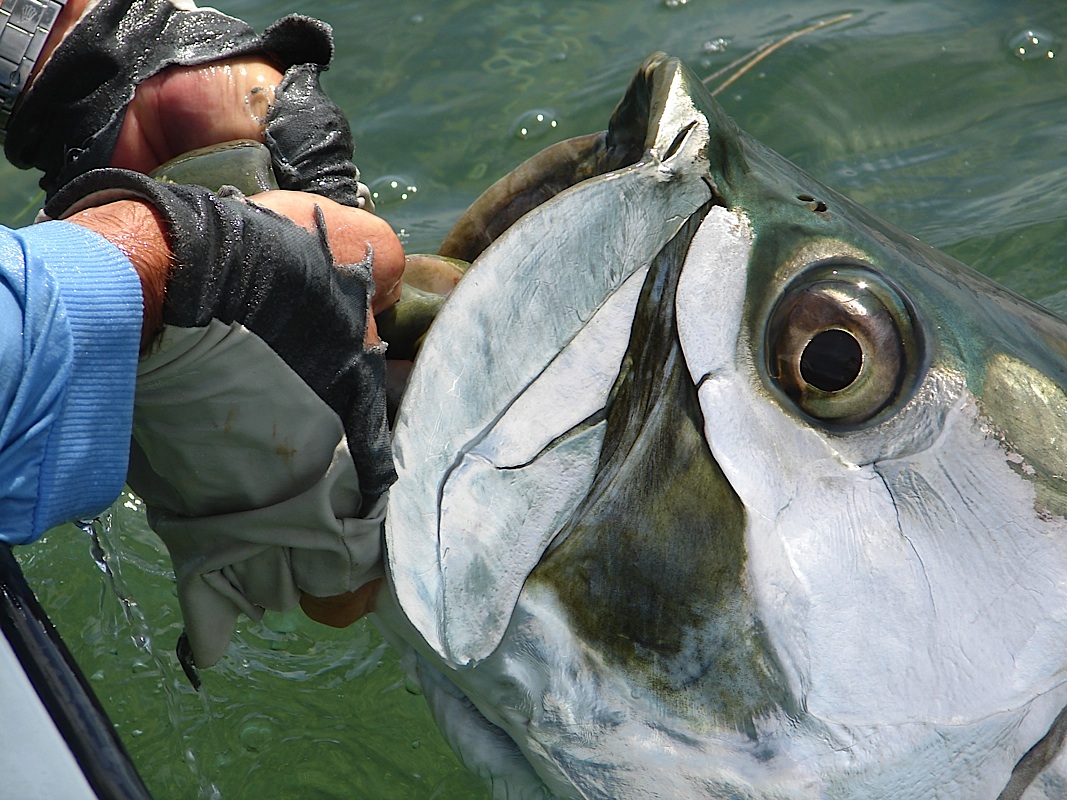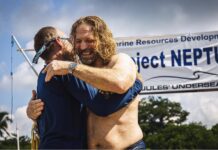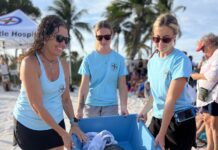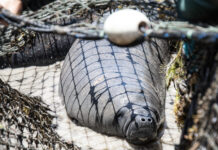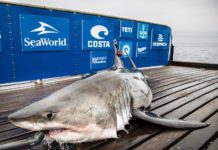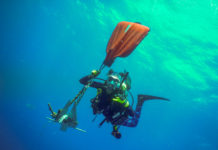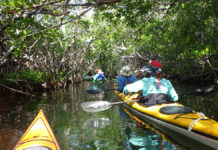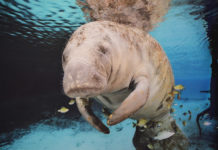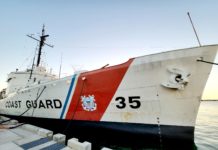April is a taxing month; IRS dips into our wallets and strong silver tarpon tax the arms and shoulders of lucky anglers. Following a difficult wind-blown March, flats anglers enjoyed spring weather that settled in right after April Fool’s Day. Thousands of Gulf of Mexico tarpon appeared in Florida Bay and inshore Gulf waters heading for the big bridges — Channel Two, Long Key, Seven Mile, and Bahia Honda. Their Atlantic cousins — which wintered in Miami’s Government Cut — began their migration down the Oceanside of the Keys.
These early backcountry migrants were biters. During the first half of April, anglers and guides working spots from Key West’s Gulfside Seaplane Basin to First National Bank in the northern reaches of Florida Bay found tarpon willing to scarf up well presented flies and baits. I was getting excited reports of fly casters jumping up to 10 fish per day when they could make the right casts. And some of these were large tarpon — 100 pounds plus was common. There is also an unconfirmed report of a 250 pound fish captured by a first time Keys’ angler guided out of Islamorada.
Tarpon were also stacking up under the big bridges and began to eat mullet and drifted crabs. Eating, however, is not catching. Last weekend my neighbor fed 13 mullet to Seven Mile Bridge tarpon without landing a single one. Some days the fish win.
All this bridge action was the precursor to the big jailbreak — when the fish would start swimming the Oceanside from bridge to bridge, channel to channel in long strings and big reddish “meatballs” — densely packed schools of tarpon often numbering 100 or more. Reports, and personal observation, indicate the ocean migration got into gear shortly after Tax Day. Ocean and bridge fishing for the big poons should last well into June when the fish decide to cooperate. It seemed the tarpon were “pouring” along their migration paths recently but there will be days, even at peak times, when the tarpon go AWOL leaving expectant anglers and guides very disappointed.
That’s a good time to appreciate the often unsung joys of fishing the flats. Something is usually happening in the clear shallow waters with stately eagle rays (spotted and unspotted), sharks, stingrays, aqua colored trunkfish, and sponges and sea fans on full display. Fishing in Mother Nature’s aquarium is rarely boring and unique critters turn up frequently. A week ago — waiting on Marathon’s Atlantic-side for non-existent tarpon (megalops invisibulus) — a large brownish shape approached the flats skiff. What I thought was a big nurse shark turned into an enormous sawfish. Easily 12 feet long, with a sinister looking 3 foot long “saw” on its nose, the strange fish glided right under the boat and proceeded to nail a crab or lobster. Listed as a federally “endangered species” the unique sawfish is not a common site any more — especially the big ones. I was glad to see it and promptly forgot that I hadn’t seen any poons.
Although veteran Keys’ flats anglers are obsessed with tarpon, many visitors remain interested in other flats species. Mike Lawson (a renowned trout angler/author from Idaho) was visiting two weeks ago to chase tarpon but was curious about catching a flats cobia. We talked about it and I noted that it’s most common in February and early March with cobia coming onto the flats to follow rays and sometimes sharks. On the very next day Mike was returning to Sugarloaf Marina when his guide, Capt. Justin Rea, suddenly wheeled the boat to a stop and pointed to a large brown fish shadowing a shark. Mike thought it was another shark but Rea told him it was “dinner.” The 30 pound cobia pounced on a tarpon fly, fought tenaciously, and ended up on the grill that evening.
Access to Florida Bay and its flats – which hold tarpon, cobia, bonefish, redfish, and snook among other glamour species – has become a big issue. Most of the Bay is within the boundaries of Everglades National Park which recently released its long awaited proposed General Management Plan (GMP). The National Park Service (NPS) – a federal agency – wants to designate approximately 33 percent of the Bay as “pole and troll” zones – where operation of a regular outboard engine is prohibited. If these zones are limited to the shallow crowns of the big flats, impacts on access will be modest. But if the zones extend off of the flats into adjacent 2-3 feet deep waters, navigating the Bay will become extremely difficult.
Marathon resident Bill Horn is a veteran Keys’ flats angler, a former Assistant Secretary of the Interior for Fish, Wildlife, and Parks under President Reagan, and author of “Seasons on the Flats: An Angler’s Year in the Florida Keys.” For more information see his website www.seasonsontheflats.com or contact him at bhorn@seasonsontheflats.com.
















